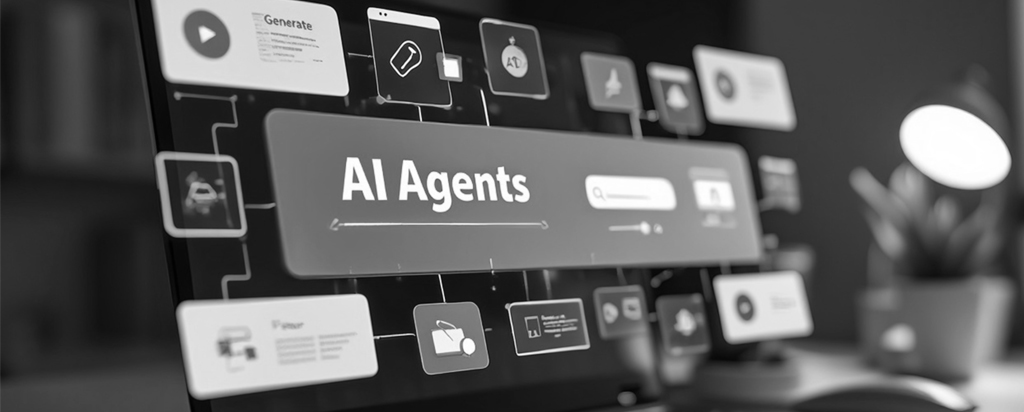Agentic AI vs. Deep Q-Learning: Two Paths to Intelligent Autonomy
By Ravi Vanapalli , Technical Program Manager, Nihilent Limited
Agentic AI vs. Deep Q-Learning: Two Paths to Intelligent Autonomy
In the past year, “Agentic AI” has become the buzzword in enterprise AI circles. Headlines promise systems that think, plan, and act autonomously. But beneath the hype lies familiar ground: principles rooted in Reinforcement Learning (RL) and Multi-Agent Deep Q-Learning, often referred to as Multi-Agent Reinforcement Learning (MARL).
At their heart, both approaches share a single ambition: to create autonomous systems that perceive their environment, make decisions, and act with purpose. The difference lies not in the destination, but in how they navigate the journey, including their architecture, scalability, and applications.
|
Concept |
Core Focus |
Learning Style |
Environment |
|---|---|---|---|
|
Deep Q-Learning (DQL) |
Learning optimal actions to maximize rewards |
Trial-and-error learning through Q-value updates |
Single-agent, closed environment |
|
Multi-Agent DQL (MARL) |
Coordinated or competitive learning among multiple agents |
Shared or independent experience buffers; collaboration and adaptation |
Multi-agent, dynamic environment |
|
Agentic AI |
Task orchestration, strategic reasoning, planning, and execution |
Integrates memory, context, tools, and language-based reasoning |
Open-ended, adaptive, and goal-driven environment |
Learning What vs. Learning Why
Deep Q-Learning (DQL): Imagine a robot learning to navigate a maze. At each turn, it evaluates its options, tries actions, receives feedback, and gradually refines its choices to maximize rewards. This is value-driven learning. The agent doesn’t understand why a path works; it simply knows which steps tend to yield better outcomes.
Simplified pseudo-code
for each episode:
state = env.reset()
while not done:
action = argmax(Q[state]) if random() > ε else random_action()
new_state, reward = env.step(action)
Q[state, action] = reward + γ * max(Q[new_state])
state = new_state
Agentic AI: Now, imagine a system that not only navigates the maze but understands why one path is better, evaluates multiple strategies, and chooses the route that aligns with a larger goal. Agentic AI combines language models, tools, memory, and feedback loops to embed reasoning into decision-making.
Example (simplified)
goal = "Optimize logistics route" plan = llm.generate_plan(goal) actions = agent.execute(plan, tools=["maps", "optimizer"]) feedback = evaluate(actions) agent.update_memory(goal, feedback)
Where DQL focuses on maximizing immediate or long-term rewards, Agentic AI focuses on goal completion, reasoning quality, and explainable decisions. The system learns not just what to do, but why and how.
Converging Paths: MARL Meets Agentic AI
The real excitement begins when these approaches converge. Multi-agent systems, once purely focused on coordination among DQL agents, are evolving. Agentic AI increasingly uses multiple specialized agents: one perceives, one plans, and one executes. At the same time, MARL research is adding reasoning traits such as communication protocols, self-evaluation, and goal decomposition.
This convergence creates an ecosystem where trial-and-error learning meets goal-driven reasoning. Each paradigm strengthens the other: MARL ensures adaptability and robustness, while Agentic AI brings strategic orchestration and explainable intelligence.
Real-world synergy examples:
-
Autonomous operations: MARL governs real-time control; Agentic AI orchestrates strategy across the system.
-
Smart manufacturing: MARL agents optimize micro-decisions; Agentic AI ensures process-level efficiency and alignment.
-
Financial systems: Independent DQL agents trade; an Agentic coordinator manages portfolio balance and risk.
Strategic Insight for Technology Leaders
For technology executives and AI leaders, the key takeaway is simple. Agentic AI is not a replacement for MARL. It is an abstraction layer that elevates it.
-
DQL provides the foundation by enabling precise learning from interaction and feedback.
-
MARL allows execution at scale as agents collaborate to adapt to dynamic environments.
-
Agentic AI operates at the top, bringing reasoning, context, explainability, and goal alignment.
The next generation of enterprise intelligence emerges at the intersection of these three. Systems become autonomous, explainable, adaptive, and strategically intelligent. Organizations can move from reactive automation, which only responds to events, to proactive intelligence that anticipates outcomes and orchestrates action with purpose.
Why This Matters Today
In practical terms, Agentic AI equips enterprises to:
-
Scale intelligence: Layer reasoning over multiple autonomous agents.
-
Enhance explainability: Make AI decisions interpretable for executives, regulators, and customers.
-
Align outcomes with goals: Ensure autonomous systems don’t just act, but act strategically.
As AI adoption grows, the winners will be those who integrate reasoning, execution, and learning into a coherent ecosystem and not just those who deploy isolated models.”
The Takeaway
-
Agentic AI = orchestration layer (the “why”)
-
MARL = execution engine (the “how”)
-
DQL = learning foundation (the “what”)
Intelligent enterprises will blend all three: reasoning from Agentic AI, adaptability from MARL, and precision from DQL. This is the blueprint for moving from simple automation to true autonomous intelligence, a future where AI does not just act but also strategizes.
Most Read
May 28, 2019
Driving Operational Excellence Through Design Thinking
February 11, 2020
The Art of Data Science
June 12, 2019
Financial Inclusion through Digital Diversification





